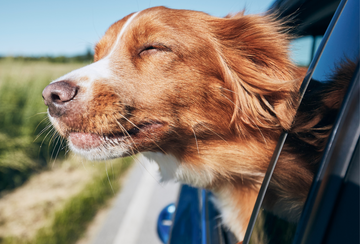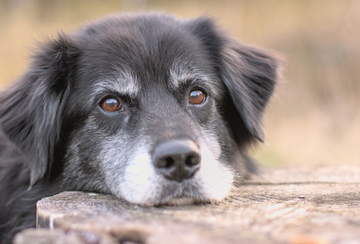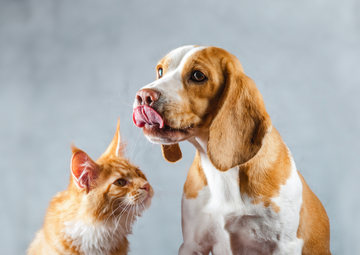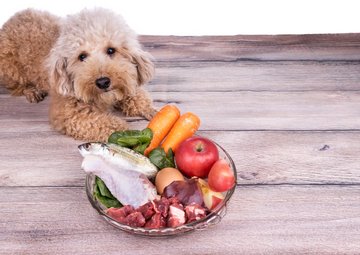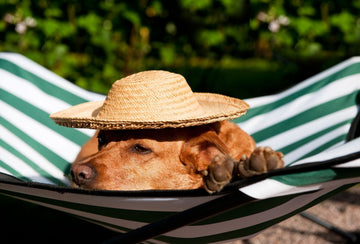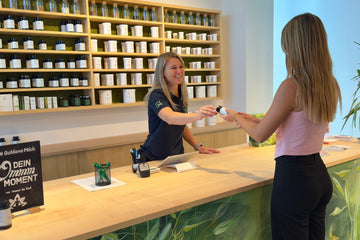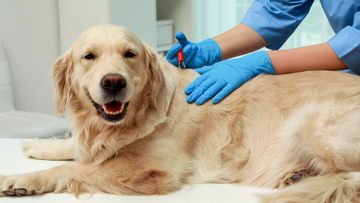Why is car travel stressful for many dogs?
The thought of a vacation with your four-legged friend makes your heart race – but the thought of a long car ride makes your stomach lurch? You're not alone! Many dog owners face the challenge of getting their pet used to long car rides without stress.
For many dogs, traveling by car is unfamiliar – and unfamiliarity means stress. The combination of the vehicle's movement, unfamiliar noises, vibrations, and smells can quickly lead to anxiety. Furthermore, the dog often lacks the ability to control the situation on its own or to flee – a natural instinct when danger threatens.
Another stress factor: negative experiences. If your dog associates car travel only with vet visits or long, unpleasant journeys, he will feel uncomfortable even on harmless trips.
Typical signs of travel stress in dogs:
- Panting, drooling, trembling
- Restlessness or whining
- Vomiting or diarrhea
- Refusal to get into the car
But: With targeted training and positive experiences, you can take away your dog's fear step by step - and make the car a safe place.
How can I get my dog used to car rides early?
Dogs are creatures of habit. The key to a relaxed car ride lies in early and positive habituation. Slowness and consistency are more important than speed. Here's how to ideally proceed:
1. Establish the parked car as a safe place
Before the engine even starts, your dog should be allowed to get to know the car in peace:
- Let him get in and out of the stationary car – voluntarily and without pressure.
- Reward every calm behavior with a treat, a game, or a petting session.
- Place his blanket, a toy, or chew toy in the trunk or on the seat to create a sense of “home.”
2. Very short journeys to the boarding point
Start with very short rides of just 1-2 minutes. The goal is to keep your dog calm, not the distance.
- For example, just drive around the block or to the nearest dirt road.
- Praise and reward after the ride help to create a positive association.
3. Choose pleasant destinations
Avoid vet visits during the training phase! Instead, go to stress-free places your dog loves:
- Forest or meadow walks
- Friends with dogs
- Streams or lakes (for heat-sensitive dogs)
This creates a positive expectation: car = adventure.
4. Pay attention to signals and increase slowly
Every dog exhibits unique stress signals. Pay close attention to:
- If he yawns, drools, or hides, take a step back.
- Only increase the length of the journey once your dog has relaxed several times on short journeys.
5. Drive calmly yourself
Your own energy is transferred directly to your dog. The more relaxed you are, the more relaxed your four-legged friend will be.
Pro tip: Make sure your car is well-ventilated, but avoid drafts. Air out thoroughly before driving and keep the temperature comfortable—especially in summer.
How do I ensure safety and comfort in the car?
A secure, safe place in the car is essential—not only for your dog, but also for your safety. Road traffic regulations stipulate that animals must be secured in the car so that they cannot be thrown forward in the event of sudden braking. Transport crates, seat belts, or barriers are best suited—depending on your dog's size and temperament.
In addition to safety, comfort also plays an important role: A well-padded bed prevents pressure points, and familiar items like a blanket or a chew toy help create a sense of security. Also consider sunshades in the summer to prevent your dog from overheating – and provide plenty of fresh air without drafts.
How often should I take breaks while driving?
You should take a break at least every two hours—more often is better if your dog is young, old, or very active. Use these breaks not only to relieve himself, but also to take short walks, stretch his legs, and drink water. This allows your dog to burn off excess energy and reduce stress before continuing on. Make sure to choose shady, quiet spots away from traffic.
What should my dog eat before and during the trip?
Before a long car journey, less is often more: Give your dog a small, easily digestible meal at least two to three hours before departure. This way, his stomach isn't empty, but it's also not burdened – this helps prevent travel sickness. It's best to avoid fatty or unfamiliar foods on travel days.
During the journey, the rule is: Drinking is fine, eating is not – unless the journey lasts all day. In that case, you can offer a small portion during a longer break. Important: Make sure fresh water is always available, ideally in a leak-proof travel bowl. And please refrain from giving treats as a "calming" measure during the journey – this can quickly backfire if your dog becomes nervous or slightly nauseous.
What should I do if my dog is nervous in the car?
Some dogs remain restless or stressed in the car despite training. Targeted supplementation with calming micronutrients can help. SMOOTH Dog® from Nikolaus Nature was developed to provide nutritional support for dogs in stressful situations.  What's inside:
What's inside:
- natural casein (provides high-quality protein, calcium & phosphorus)
- Ginkgo leaves & calamus (for circulation and nerves)
- Oyster shell powder (calcium)
These nutrients can help support nerves – without sedation. This will keep your dog calmer, and you can look forward to the trip. Ideally, you should start feeding two days before the start of your trip.
→ Learn more about SMOOTH Dog®
How do I best plan my trip with a dog?
Travel preparation plan: How to start your vacation with your dog in a relaxed manner!
Two days before departure:
- Start feeding SMOOTH Dog® according to the recommended dosage. This supplementary food was specially developed to provide natural support for dogs in stressful situations, such as car rides.
- Get your dog used to the car again (start the engine, drive for a short time, praise).
- Prepare his travel equipment: carrier or seat belt, blanket, familiar toys, water bottle, travel bowl, snacks.
One day before departure:
- Continue feeding SMOOTH Dog® as usual.
- Take a nice trip or walk with lots of positive impressions.
- Load the car, set up a dog seat, check the air conditioning, and possibly attach a sun visor.
- Go through your travel checklist and have everything ready to hand (vaccination records, emergency numbers, favorite chews, etc.).
On the day of travel – 2–3 hours before departure:
- Give your dog only a small, easily digestible meal.
- Make sure he drinks enough.
- Take a long walk before you leave so he can loosen up and relax.
- Mix SMOOTH Dog® into the food as usual.
Shortly before departure:
- Use a fixed ritual: e.g. “Let’s go!”, a quiet stroke and his favorite toy.
- Check again: safety, water, leash, window position, quiet in the vehicle.
During the journey:
- Take a break every 2 hours at the latest: exercise, fresh water, a quick petting session.
- Avoid feeding while driving – ideally only during longer breaks and on very long journeys.
- Keep the climate in the car pleasant, without drafts, and avoid loud music or hectic movements.
Conclusion: With a little training, patience, and the right support, traveling will become a habit for your dog—and a pure joy for you. Your vacation begins as soon as you get into the car.


